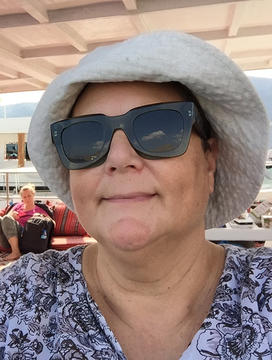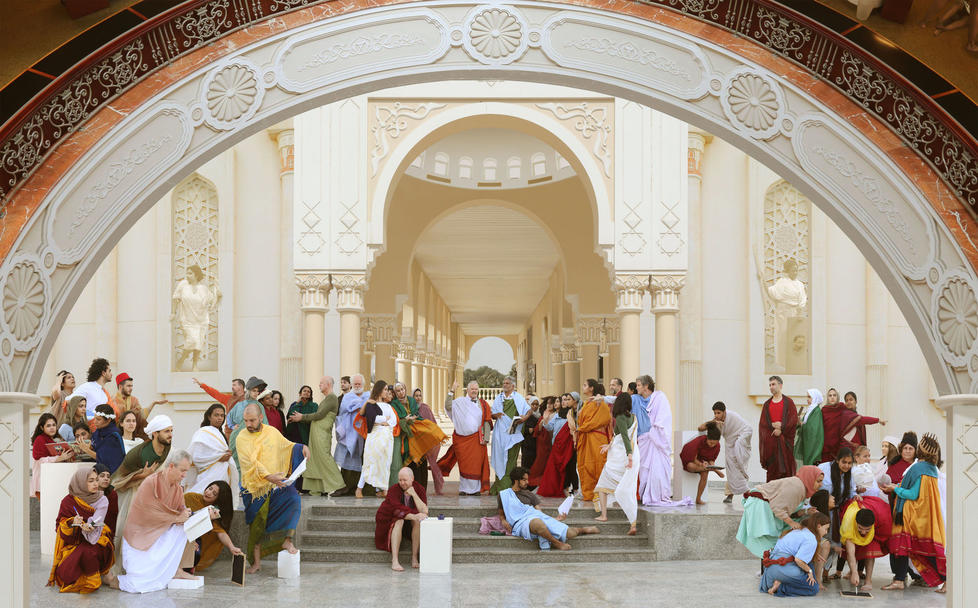Voices: ‘A Deeply International Experience’
On teaching architecture to the women of the American University of Sharjah
In 2017, Varkki Pallathucheril, dean of the College of Architecture, Art, and Design, invited me to attend final reviews in the architecture department at AUS. I learned that the student population in this program is 80 percent female, and there were no full-time female faculty at the time. I also learned that the university attracted a highly diverse group of students from places like India, Oman, Saudi Arabia, Sudan, Syria, Iraq, Morocco, Iran, Egypt, Pakistan, Afghanistan, Palestine, Uzbekistan, and more — students who also possessed exceptionally high performance records. This convinced me to accept Pallathucheril’s offer of a visiting position for the 2017-18 academic year. It would become the most exceptional teaching experience of my life.
After announcing to friends and colleagues that I would be teaching in Sharjah for a year, a world of misperceptions emerged in the kind of questions and comments I fielded about the impending trip. Will you have to wear an abaya and hijab? Are men and women taught in the same classroom space? Can you drive a car? One colleague went so far as to call it “the evil empire,” and pretty much everyone said, “Stay safe.” I wore Western-style clothing that covered my shoulders and knees. Classes were coed. And yes, I drove a car. The university was an empowering and positive teaching environment, especially for female students. Even with missiles being fired nearby from Yemen to Saudi Arabi, I felt safer in the Emirates, where there are no purchasable automatic weapons, than back in the United States, where multiple mass shootings occurred during my absence.
While the architecture department continues to actively recruit and retain female faculty, it is likely that the preconceptions about life in the Emirates for women is a significant obstacle to this process. For me, the experience living and working in the Emirates was highly positive and transformative. The powerful female students in architecture contributed significantly to my incredible year in the UAE.
Because architectural design is considered to be a feminine vocation in the Emirates, in comparison with engineering, AUS is graduating high numbers of highly driven and talented young women who are rapidly taking over the design profession in this part of the world. They are effecting dramatic positive change for the empowerment of women in the professions and concomitantly in daily life. To place a finer point on this gender divide, admission to the architecture program at AUS is very competitive, so the gender ratio may also reflect the better academic performance of female high school students.
I took a leave of absence from Woodbury University in Burbank, Calif., with the intention of giving back to the world at large and seeking the opportunity to understand what an all-female student (or almost all-female) school of architecture would be like as a learning environment. As with most altruistic efforts, there was as much or more the students at AUS gave to me as I offered them. They pushed me to perform at my highest level with a voracious appetite for knowledge and excellence. Most students were trilingual, speaking Arabic, Hindi, or Farsi, along with perfect French and English. They were engaged, internally powerful, sophisticated, and politically active world citizens. It was a joy and privilege to work with such high-performing, well-prepared, and appreciative students.
At the beginning of my experience there, the hijab operated as something of a cultural barrier because I tended to identify the headscarf as a symbol of being shy or somehow docile. I could not have been more mistaken. The women at AUS are dynamos. One student who self-identified as lesbian informed me that she elected to wear the hijab as a statement of independence and female empowerment. When she told me that her grandmother was able to rebuild her house in Iraq, which had been bombed, with wedding-gift gold jewelry she kept in a box, I was at a loss for words on how to respond to such a terrifying experience and this woman’s true grit. She also informed me that her mother refuses to attend the female portion of the university mosque, because it is just too hard to climb the stairs, and worships instead in the male designated space.
Half of my classes were all-female and the other half were about 80 percent female. It was transformative to have access to this world of women and to a teaching environment where gender distinctions melted into a high level of sorority and professionalism. The abaya, often open and flowing, made the school feel a bit like Oxford or Cambridge, with students wearing academical gowns to class and focusing on their courses and not a clothes competition. Yes, fashion and high-end designers could be seen in footwear, handbags, and more. But the simple covering gown also emphasized the value of generic, uniform professional apparel to keep the focus on learning.
Michael Hughes *93, the former department head, developed the architecture curriculum with design-build studios as a core identity. These are studios where students, as the title implies, first design and then actually construct a small project within the duration of an academic year. The project often is a pavilion, a small structure that is doable in a nine-month period and one that requires the kind of precise construction skills and sheer heavy lifting generally associated with male abilities. Professor Hughes was prescient in focusing on design projects where male students often thrive as a way of empowering female students, who gain immense confidence and general building knowledge with this hands-on learning. While there is absolutely no way of determining the gender of the students who built the number of complex and elegant pavilions scattered across campus, the school’s demographics and class rosters indicate that these are projects completed by a high percentage of women.
The highlight of the year occurred for me when students organized an AUS version of Raffaello Sanzio’s “School of Athens.” This tableau vivant is becoming an annual event to build community; AUS students, faculty, and campus buildings substitute for the people and spaces appearing in a famous painting. Bringing dozens of people together for one large photo shoot requires tremendous planning and organizational skills. The morning of the shoot was fabulous, with everyone hanging out and joking around as the students placed us in our “characters.” I was honored to play Raffaello himself — you can find me in the lower right corner of the photograph wearing a black headscarf and looking straight at the camera.
While I will not miss the Emirates’ 100-degree heat and 90-percent humidity, traffic at a complete standstill, driving to Ajman to purchase a bottle of wine, or referring to the Persian Gulf as the Arabian Gulf, I will miss hearing the morning and evening call to prayer, floating in the salty sea, the incredibly strong female students, the recalibration of my local Los Angeles perspective into a deeply international experience, and the generous hospitality of Middle Eastern culture that made me feel welcome from far away from home.

This is part of a series of personal essays at PAW Online. If you would like to contribute, contact us at paw@princeton.edu.












1 Response
Kai L. Chan *08
7 Years AgoLiving in Dubai
There are many misconceptions and a general lack of knowledge of the Middle East by those outside of the region. It was thus refreshing to read Paulette Singley *98's take on her experience at the American University of Sharjah.
I spent over five years in Dubai, having recently relocated (back) to Canada. Though the UAE -- of which Sharjah and Dubai are among the seven emirates that make up the federation -- are remarkably different than the rest of the Middle East, living there definitely opened my eyes to gain a better appreciation of that part of the world. Although there are serious issues in the neighboring countries, the UAE, and in particular Dubai, is a modern and liberal society with a highly diverse population that also counts a thriving Princeton alumni community.
In my time in Dubai, there was no shortage of boozy parties or women dressed in seductive clothing. Most ironically, and a testament to the diversity and dynamism of the UAE, is that I now play less ice hockey and at a lower level while living in the Mecca of hockey (Montreal) than I did when I was residing in the Arabian desert of Dubai.